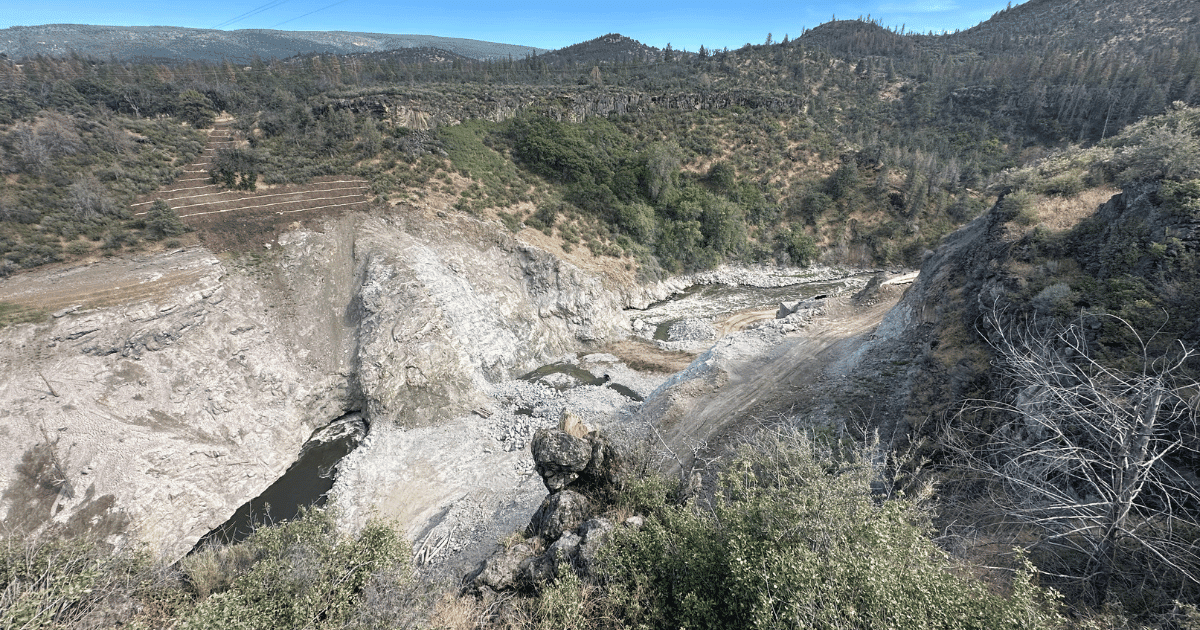The Klamath River Dams Are Disappearing Fast
The Klamath River dams are almost gone! Removal of the four Klamath River dams is the largest dam removal project in the history of the United States and the largest salmon restoration project ever. It will also begin to restore justice to the Tribes and indigenous peoples who have lived along the Klamath River since time immemorial.
Earlier this week, Curtis Knight, CalTrout Executive Director, toured the dams with fellow Klamath River Renewal Corporation board members. His big takeaway: “they’re disappearing fast!”
Iron Gate Dam is about halfway gone. Truckload by truckload the dirt used to construct the earthen dam is being removed and relocated to a nearby source area.


The dam formerly known as Copco 1 is practically nonexistent now. You can see the river going through a tunnel diverted around the dam footprint. In the next few months, the final stages of removal will occur after which the river will be able to reclaim its natural course for the first time in over a hundred years!


Dam removal will unlock access to hundreds of miles of historic habitat for native salmon and steelhead, improve water quality for humans and non-humans alike, and mark a step towards restoring a place critical to the cultural life-ways of Indigenous peoples who have lived along the river since time immemorial.





